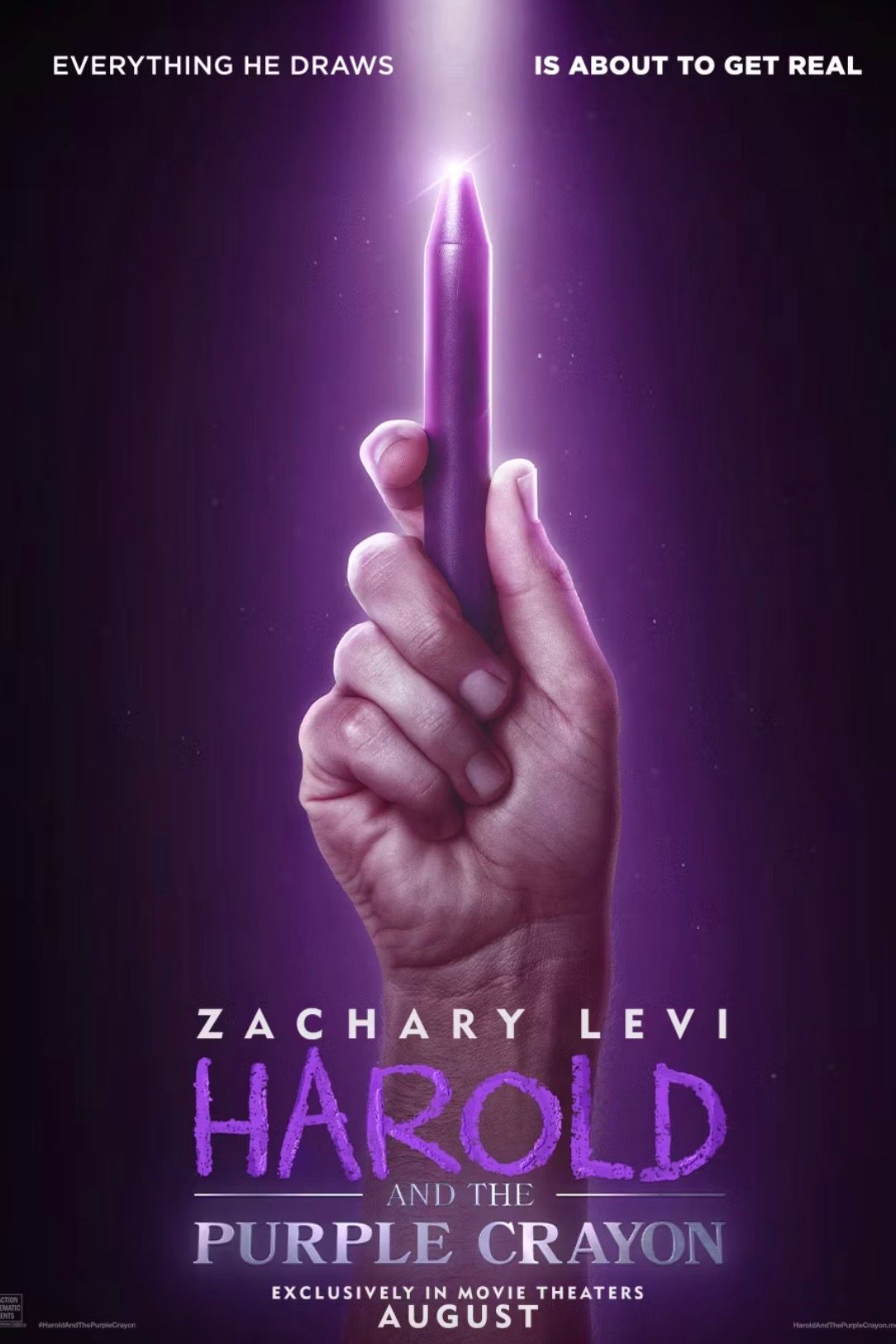Netflix refused to buy Sony’s new animated film Harold and the Purple Crayon as part of a new content strategy. Based on the children’s book of the same name and directed by Carlos Saldanha, the movie stars Zachary Levi as the titular character, who lives in an animated world where he can create anything by simply drawing it. His adventure begins when he enters the real world and discovers there’s a lot he doesn’t know. Ahead of its release, Harold and the Purple Crayon prompted baffled reactions online, particularly because Levi’s character is typically depicted as a child.
According to Bloomberg, prior to Sony’s planned release of Harold and the Purple Crayon on August 2, studio executives inquired about Netflix’s interest in acquiring the film for its streaming platform in fear that it’d fall short with the competition from Inside Out 2 and Despicable Me 4, which both had the same release window. It’s said Sony “liked the film just fine,” though. Netflix, which has been aggressive in acquiring films no longer slated for theatrical release in recent years, wasn’t interested in buying Harold and the Purple Crayon. The streaming service has adapted a new strategy to reestablish its reputation as a platform for quality movies under the direction of Netflix’s film chairman Dan Lin, which includes spending less and redirecting its resources to making films of better quality.
What This Means For Netflix & Harold And The Purple Crayon
Netflix Is Changing, And Harold Missed An Opportunity
With the new strategy, Netflix hopes to change public reception of direct-to-stream movies and their supposed inability to make good movies. Due to the change of moviegoers’ habits from going to theaters to watching at home, the studio believes that the future lies with streaming movies. Through the new strategy, they hope to make the same impact with streamed movies that theatrical films would make. This change means that Levi’s Harold and the Purple Crayon won’t be the only one Netflix rejects. At the same time, Netflix will switch from acquiring films from other studios to making stronger original films.
The change directly affected the public’s access to Harold and the Purple Crayon, which went to theaters and thus didn’t reach a wide audience, only making a meager $30.7 million worldwide. Currently, the film can be streamed on Prime Video, Apple TV+ and VUDU, and it is expected to eventually reach Netflix due to Sony’s existing deal with the streamer. However, there’s no telling how the movie would’ve performed if it went to streaming directly; it might’ve found an audience with home-bound families looking for late summer entertainment.
Our Take On Netflix’s New Strategy
It Has Both Pros And Cons
Netflix’s strategy is prioritizing quality over quantity, which means that there will be fewer films coming out onto the platform and only a selective number of projects will see the light of day. The change is not necessarily a bad thing, especially if it leads to better work being made. On the other hand, the network’s move might also lead to other platforms rejecting titles that would have been released if it wasn’t for the change in audience’s behaviors.
A film’s quality shouldn’t be judged solely on its potential to succeed at the box office, given that there are many factors in play. While Harold and the Purple Crayon was a flop at the box office and Netflix’s move would help build a better platform, it could also result in the purge of many brilliant projects. With studios and distributors being the gatekeepers of the film industry, cutting down on projects also means that some great ones might never make it to viewers, while others won’t be able to reach a broader, more accessible audience.
Source: Bloomberg
